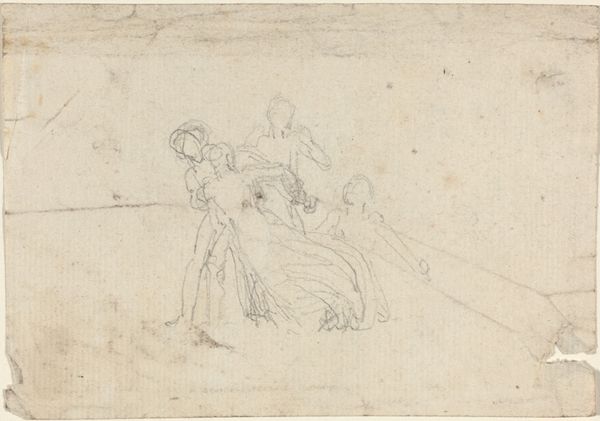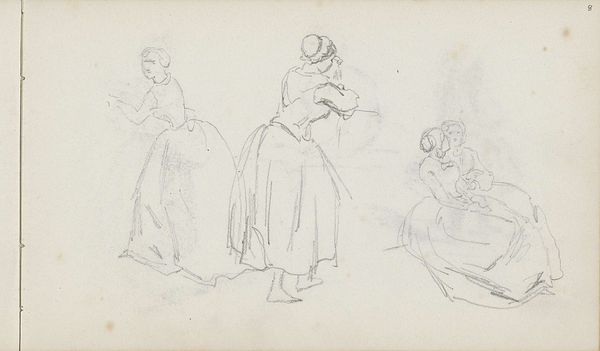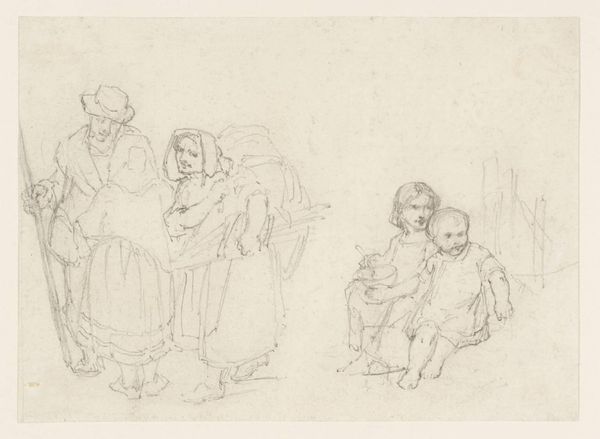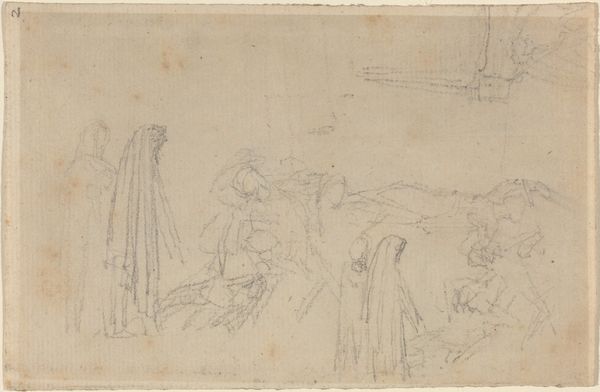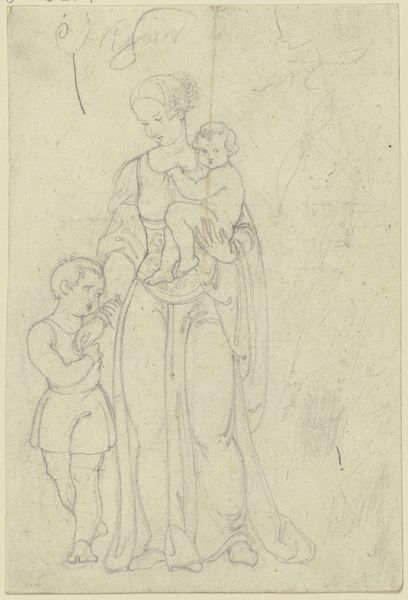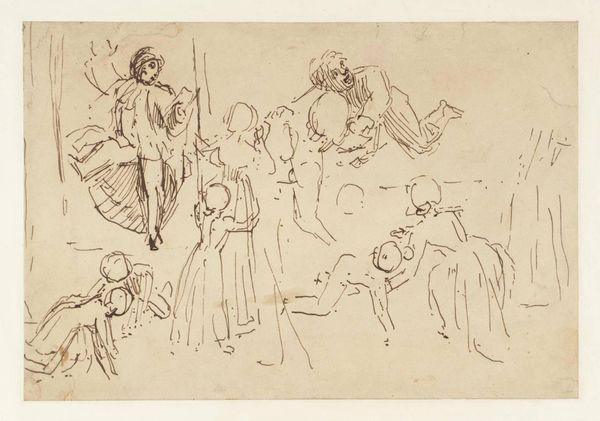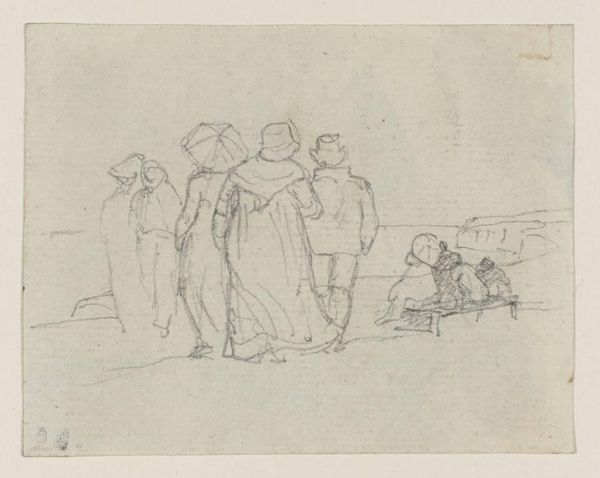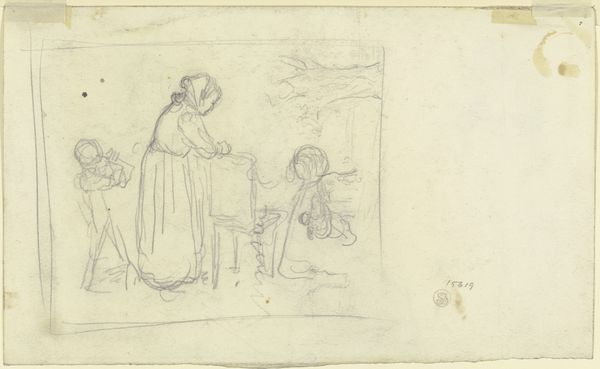
Copyright: Public Domain
Editor: This is "Influence of the Prussians in Frankfurt in 1848" by Hermann Wirsing, a pencil drawing on paper made around 1848-1849. It feels very immediate, almost like a snapshot. What's striking to me is how raw the emotion feels considering it's "just" a sketch. What do you see in this piece? Curator: What immediately grabs me is the paper itself. Its very existence as a site of production tells us something crucial about the mid-19th century. This wasn’t some precious canvas; it was a readily available, mass-produced surface, signifying an expanding print culture and literacy. Pencil, too – a relatively inexpensive material. This accessibility democratized image-making, even if the final artwork reached a select audience. What impact did the mass production of paper have on popular imagination? Editor: That’s interesting; I hadn’t thought about it in terms of materials and accessibility. So, instead of focusing solely on Wirsing’s artistic skill, we should consider the socio-economic context that allowed this sketch to even exist. Curator: Precisely! And consider the subject: not a heroic battle scene, but an everyday interaction. What kind of statement is Wirsing making through this depiction, during a revolutionary period? It’s not just *what* he’s showing us, but *how* he is showing us. His technique with pencil offers insights, doesn't it? The lines suggest not polished artistic work but hurried strokes, implying the capture of a transient historical moment that reflects labor, the consumption, and material of daily existence. Editor: That makes me think about Wirsing's process. This was a time of huge upheaval; revolutions were erupting across Europe. Did sketching with affordable, easily portable materials provide him with the means to document events quickly and directly? Curator: Absolutely. Think about the physical act of drawing in that setting. What kind of political statement does such rapid depiction of everyday life represent in relation to these uprisings? Wirsing may also imply commentary of military and political oppression by focusing on simple folk making contributions and standing in place. Editor: I hadn't really connected the materiality of the artwork to the historical context in this way. It really changes how you read the image. Curator: Seeing art through the lens of its production and its context allows you to question its intent, its impact, and its legacy far beyond surface aesthetics. I will ponder labor a lot more now.
Comments
No comments
Be the first to comment and join the conversation on the ultimate creative platform.
